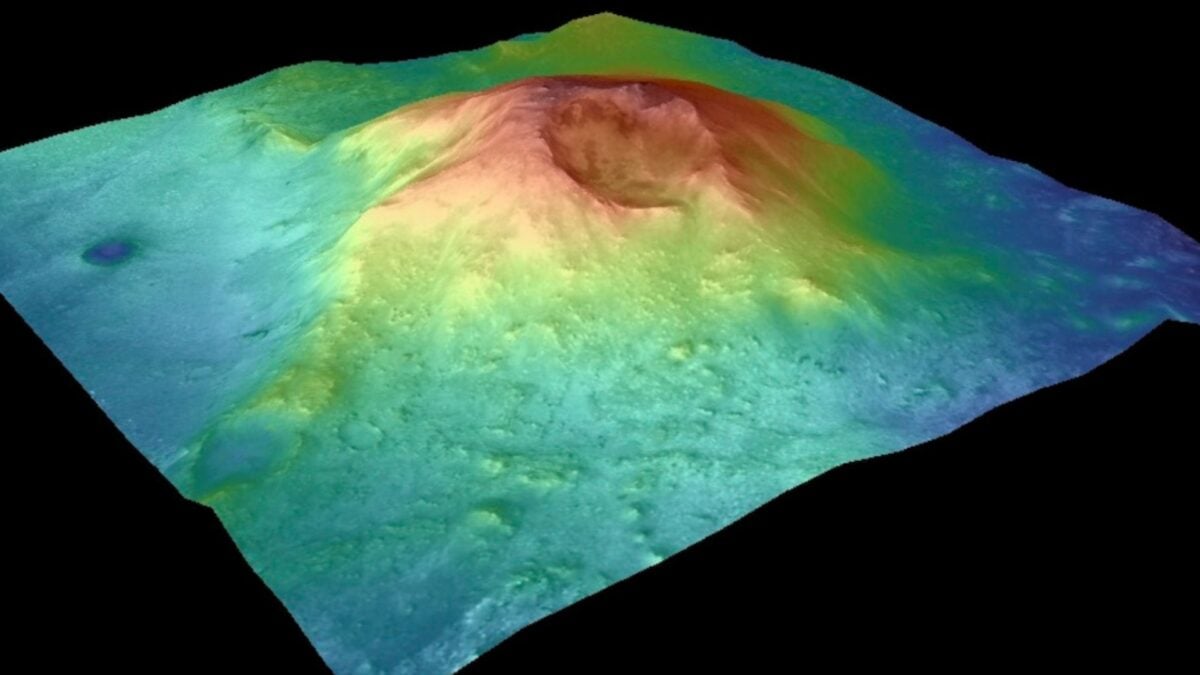
The researchers posit that the volcano could have supported conditions favorable for life in the once-watery Jezero crater.

A new panorama from NASA’s 2001 Mars Odyssey orbiter shows one of the Red Planet’s biggest volcanoes, Arsia Mons, poking through a canopy of clouds just before dawn.

Although more eroded and not as tall, the newly discovered volcano rivals the others in diameter. It’s about 450 km across. The volcano sits on the eastern edge of a broad rise called Tharsis, home to 3 other well-known giant volcanoes.

For a quiet, dusty lump of a planet we see today, Mars has had a surprisingly violent history, one that could reveal some clues about Earth.

When researchers reconstructed lava flows on Mars, they realized the red planet is a lot more active than they previously thought.

Most meteorites from Mars are just a few hundred million years old, and likely come from relatively recent volcanic events such as the eruptions on the largest volcano in the solar system, Olympus Mons.